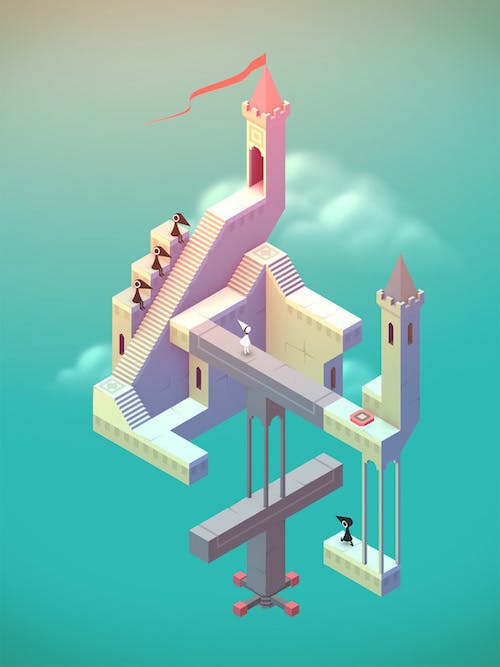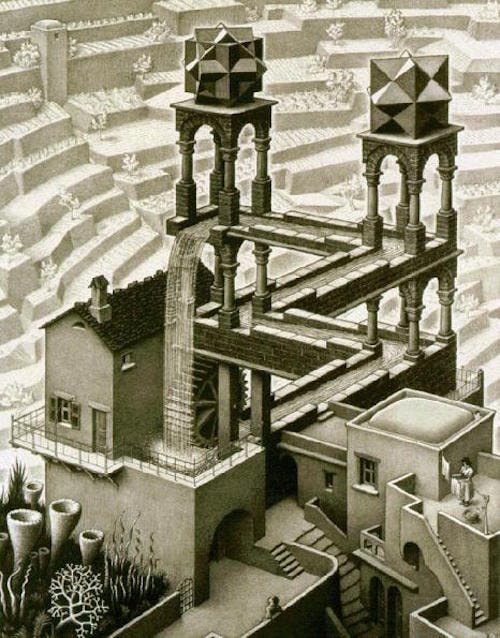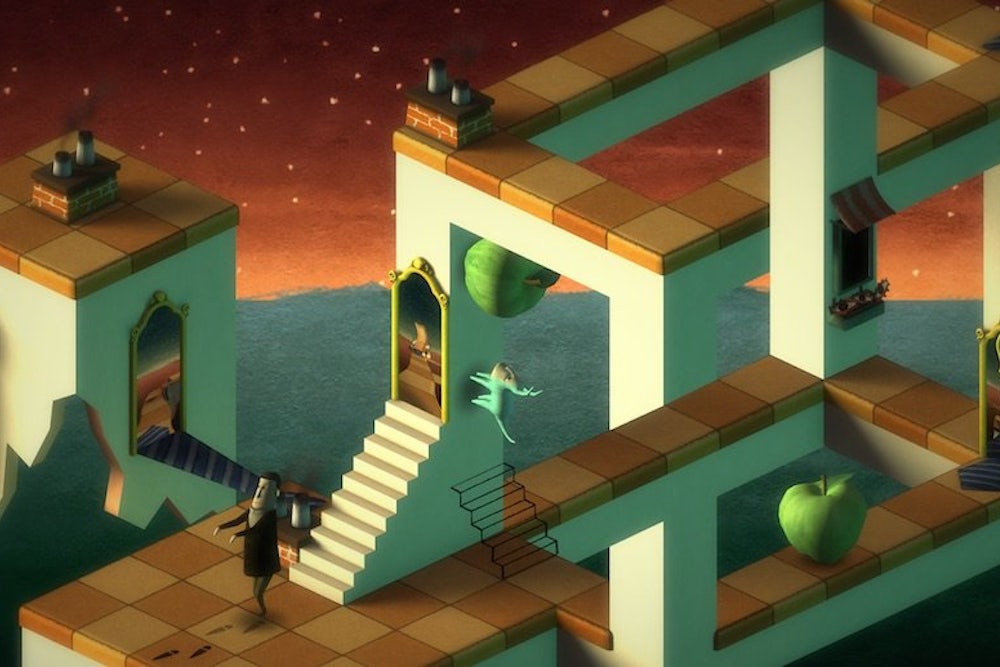It’s February 1466 and a fourteen-year-old bastard from the town of Vinci walks into your art studio looking for work. Times are tough and commissions are few; without enough florins to pay your expenses you’ve recently been forced to take a loan from the Medici family of bankers. Nevertheless, you take a chance on the boy. It proves a sage bet. Leonardo is a considerable talent. Word spreads of this bright young artist, who has landed like some kind of exotic bird in your workshop, and within a few weeks a line of eager patrons trails up to your front door. Each clutches a canvas under the arm onto which they want Leonardo to paint an aggrandising selfie or a portrait of their favourite madonna.
Painter’s Guild, launched for PC last month, is a period simulation game based on Andrea del Verrocchio’s historic atelier, of which Leonardo Da Vinci and Pietro Perugino were members. You manage a team of renaissance painters, allocating commissions to different hired artists, managing schedules (painters must rest regularly, else their work rate slows) and investing profits. It’s also a game created through the lens of late capitalism. As such, you soon turn to the business of expansion, adding new rooms to your workshop, buying plush furnishings, which increase your painters’ abilities (the quicker they are able to paint, the higher the turnover) and generally encouraging a better, more affluent kind of client. Success breeds success. Soon you’re given grander commissions. These generate funds that allow you to expand operations to Venice and Rome. Your guild seems unstoppable, at least, until the moment a member of staff is accused of a homosexual encounter and, as happened to Da Vinci in 1476, summarily thrown into prison.
The question of whether or not video games can be art has endured for decades. Proponents argue that, at their best, video games transcend entertainment to illuminate the human condition (or whatever art-defining criteria the champion has set for themselves). Detractors, meanwhile, dismiss games as toys or machines. Such provocations have often led to enjoyably flammable exchanges, such as when the late film critic Roger Ebert wrote in 2010 that “no video gamer now living will survive long enough to experience the medium as an art form.” Or when the Guardian’s art critic Jonathan Jones wrote in response to the news that the Museum of Modern Art in New York was to exhibit video games that “there needs to be a word for the overly serious praise of digital games by institutions who are almost certainly too old, too intellectual and too dignified to really be playing at this stuff.” Painter’s Guild may not settle the wearisome question of whether or not video games are art, but here is a game that contains fine art, even if, in its Super Mario-esque pixel style, the Mona Lisa looks rather blockier than she does at the Louvre.
In truth, Painter’s Guild is a game about the art of commerce more than a celebration of art itself. The paintings merely provide a prop and a premise for a game that’s principle focus is the business of tycoonery. Sure, a game based on the unsightly (and often unseen) business of monetizing painters may provide the most accurate depiction of the art world yet seen in any medium. But it’s not the first game to attempt to co-opt artists’ work for creative and commercial gain. Video game designers have been doing this for decades.
For example, the creative team behind Journey, Sony’s mournful game about religion and death, where your interactions are limited to walking and jumping, studied the work of Giorgio de Chirico when building the game’s forlorn and forsaken desert landscapes. The game shares a mustardy color palette with the bulk of Chirico’s work, as well as its forsaken structures, and textureless expanses of ground. Back to Bed, a recently released PC game from Denmark in which you must keep a sleepwalking man from coming to harm, draws influence straight from Magritte and Dalí, with melting clocks and bright green apples. The designers of Bloodborne, a recent Sony-funded release, drew heavily on Pugin’s Gothic Ornament, the classic sourcebook of decorative motifs, in search of adornments for the game’s churches, which could have been plucked from the scroll of Nicholas Hawksmoor or Christopher Wren.
Many contemporary artists, especially from the world of comics, have provided concept art for video games. Some, such as the New York-based abstract painter Rodney Greenblat with his work on the PlayStation music games PaRappa the Rapper and UmJammerLammy have drawn entire games. More notable and interesting are those games that find inspiration not only for their aesthetic but also for their mechanics in art. Wassily Kandinsky, one of the founding members of the Bauhaus art movement in the early 20th century, suffered (enviably, perhaps) from synaesthesia, a condition that allowed him to hear sound as color. In his 2001 game Rez, an esoteric shooting game set to a trance soundtrack, the Japanese game designer Tetsuya Mizuguchi explored the relationship between sound and color. You fly through space, firing lasers at abstract shapes, which explode in fireworks of shape, and sound, providing players with a window into how Kandinsky might experience music.


It’s the work of Dutch graphic artist M. C. Escher that has provided the most substantial stimulus for game designers. His impossible, perspective-fudging structures have provided a design template for numerous video games (Escher is the only artist I know of who has a Wikipedia page dedicated to video games inspired by his work). In the 2008 puzzle game Echochrome, for example, players must direct a marching mannequin toward an exit door by spinning a 3D, rotatable world. Here the mechanics of physics are directed not by the usual logic of gravity and positioning, but by one’s current perspective on the scene. Change perspective and you alter how the mannequin is able to navigate the world; optical illusion is, as in Escher’s drawings, treated as physical reality. It’s a trick repeated to tremendous commercial success by Monument Valley, a handsome iPhone game released in 2014 that had made its London-based creators more than $6 million. (The game was even featured as a minor plot point in the most recent series of House of Cards).
There are quantifiable reasons why Escher’s work is so appealing to game designers. Most obviously, video games are, more often than not, about spatial reasoning. Whether it’s rotating Tetris blocks to slot together, or positioning Mario above a pipe through which he can then descend, or dodging bullets in Call of Duty, it seems far easier to represent space than, say, human relationships in video games. Escher’s drawings almost provide blueprints for spatial reasoning puzzles, at once bewildering and yet legible.
There’s also a deeper principle that can be seen in Escher’s work. “We live in a beautiful and orderly world, not in a chaos without norms, even though that is how it sometimes appears,” Escher once said. This view gets at the heart of the game-like appeal of his work. The video game creator is like a god, who, like the painter, sits down at the start of a project with a blank space into which he is able to conjure any reality into being that he can imagine. And yet, no matter how wild and unrecognizable this new reality, like Escher’s alien landscapes, it must still abide by its own logic and reason. Our games, no matter how surreal or fantastical, must be similarly orderly—as, perhaps, must our art.
Art, in the most utilitarian sense of an “asset” has been a feature of games since a magnesium light streaked across the screen of the earliest, hulking university computers in the 1960s. And art—capital-A art—will always be harder to define, and maybe discernible only to a few. The question of whether or not video games are art is, then, one that will never be settled to everyone’s satisfaction. While that debate trundles aimlessly along to an impossible destination, game designers will continue, no doubt, to make games from art or, in the case of Painter’s Guild, about it.
